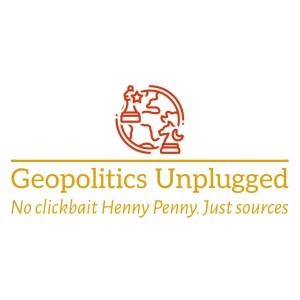
Tuesday Oct 29, 2024
Episode 46: Critical Raw Materials Act (CRMA) why you should care

Summary:
The European Union’s Critical Raw Materials Act (CRMA) is a legislative initiative aimed at securing the EU's access to critical raw materials. The Act seeks to strengthen domestic supply chains, reduce reliance on single suppliers (particularly China), and promote sustainable mining, processing, and recycling within Europe. By facilitating access to existing EU funds and prioritizing “Strategic Projects”, the CRMA aims to increase the EU’s self-sufficiency and reduce supply chain risks associated with critical raw materials, which are essential for advanced technologies like electric vehicles, renewable energy, and defense. However, the Act’s impact is uncertain due to high costs and infrastructure needs, and its potential to affect global supply chains, impacting the cost and availability of these technologies for consumers and industries worldwide, remains to be seen.
Questions to consider as you read/listen:
- What are the main objectives and strategies of the European Union's Critical Raw Materials Act (CRMA)?
- How might the CRMA affect global supply chains for critical raw materials and the broader technology landscape?
- How does the CRMA's approach to securing critical raw materials differ from the US CHIPS Act and IRA, and what are the potential consequences of these differences?
Long format:
Critical Raw Materials Act (CRMA) why you should care
A lot of focus and attention is placed on the US CHIPS Act and the IRA and rightfully so. One additional and somewhat related EU act that should be likewise known is The European Union's Critical Raw Materials Act (CRMA).
TL;DR: European Union’s Critical Raw Materials Act (CRMA)
The CRMA aims to secure the EU’s access to critical raw materials by strengthening its supply chains, reducing dependency on single suppliers (especially China), and promoting sustainable mining, processing, and recycling within Europe. This includes “Strategic Projects” with streamlined permitting and funding access to develop essential materials like lithium, cobalt, and rare earths for technologies such as EVs, renewable energy, and defense.
Unlike the U.S. CHIPS Act and IRA, the CRMA doesn’t offer direct funding; instead, it facilitates access to existing EU funds. While aiming to bolster the EU’s self-sufficiency and reduce supply chain risks, the Act’s impact is uncertain due to high costs and infrastructure needs. Americans should care because it could affect global supply, possibly impacting the cost and availability of critical technology components worldwide.
CRMA
The European Union's Critical Raw Materials Act (CRMA) is a legislative initiative designed to secure the EU's access to critical raw materials by strengthening its domestic supply chains, reducing reliance on single suppliers, and promoting sustainable practices, aiming to mitigate risks of supply disruptions in key industries like cleantech and digital technologies by increasing extraction, processing, and recycling capacities within the EU while diversifying import sources.
The Act seeks to identify “Strategic Projects" with streamlined permitting and access to finance to build domestic capabilities to reduce the influence outside of the EU and China.
The Act identifies specific raw materials considered "critical" due to their high economic importance and potential supply chain vulnerabilities, such as rare earth elements, lithium, cobalt, and graphite.
According to the European Union Critical Raw Materials Act, "critical raw materials" are raw materials considered highly important to the EU economy but with a high risk of supply disruption, while "strategic raw materials" are a subset of critical raw materials that hold additional strategic importance due to their use in advanced technologies like green energy, digitalization, defense, and space applications; essentially, strategic raw materials are considered even more critical for the EU's security and technological advancement.
The CRMA aims to diversify the EU's sourcing of critical raw materials by reducing dependence on single third countries and encouraging partnerships with multiple suppliers. In other words, trying to China-proof themselves.
The Act incentivizes the development of mining and processing capacities within the EU to increase domestic extraction and processing of critical raw materials.
A key aspect of the CRMA is to enhance recycling and reuse of critical raw materials to improve circularity within the value chain.
Americans should care about the European Union's Critical Raw Materials Act because it could significantly impact the global supply chain for essential minerals used in critical technologies like electric vehicles, renewable energy systems, and electronics, potentially affecting the cost and availability of these products for American consumers and industries, particularly if the EU prioritizes securing its own supply chains at the expense of other markets due to concerns over reliance on single suppliers, like China, for critical raw materials like lithium, cobalt, and rare earths.
The effectiveness of this Act is unknown and not yet at all certain. Building domestic mining and processing capacity in the EU can be costly and time-consuming, requiring significant investment and infrastructure development. One of the “holes” of the Act is the lack of direct government funding. This may curb its effectiveness.
Unlike the CHIPS and IRA Acts, the European Union Critical Raw Materials Act (CRMA) does not provide direct funding itself, but instead facilitates access to existing EU funds like the Recovery and Resilience Facility, Just Transition Fund, European Regional Development Fund, Innovation Fund, and InvestEU to support "Strategic Projects" which are critical raw material projects deemed of high strategic importance, enabling them to receive streamlined permitting and potential financial assistance through these funds; essentially, the Act creates a framework for prioritizing and expediting funding for key projects in the critical raw materials sector rather than directly allocating new funds itself.
Sources:
No comments yet. Be the first to say something!